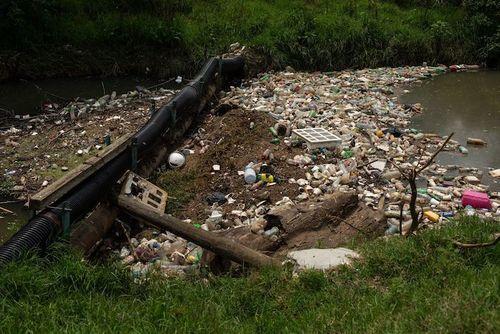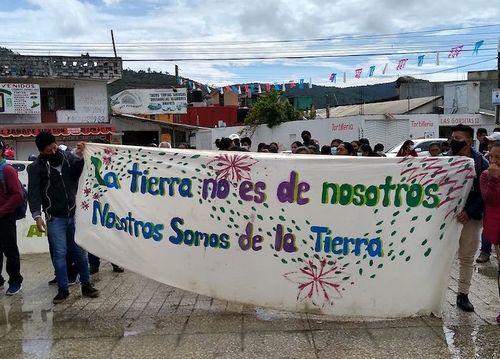The María Eugenia and La Kisst mountain wetlands in San Cristóbal de las Casas, Chiapas, are beginning to receive attention from the authorities. After an environmental defense of more than 10 years full of mobilizations, bureaucracy, aggression against environmentalists in the region and the intervention of the National Human Rights Commission (CNDH), the declaration of Critical Habitat for its conservation was published.
At the national level, this is the first time that the Ministry of Environment and Natural Resources (Semarnat) has established a Critical Habitat that, unlike other forms of environmental protection, focuses on employing urgent measures to stop damage.
“María Eugenia and La Kisst are in a situation of very critical deterioration. Recognizing it as such allows the ambiguity of what it is and what is happening to no longer remain. That decisive intervention be taken to define the various environmental crimes,” explained León Enrique Ávila, professor of Sustainable Development and member of the General Council of the Southern Zone and the Wetlands.
The main threat, Avila says, is irregular real estate development. This has caused damage and pollution to the ecosystem, especially in low-lying areas where the loss of biodiversity is 60%.
This is despite the fact that since 2005 María Eugenia and La Kisst were declared a Ramsar site, in accordance with the Convention Relating to Wetlands of International Importance. In addition to being natural areas protected by state decrees of 2008 and 2011.
Contrary to what was expected with these protection titles, between 2015 and 2018, complaints from residents and groups increased against former municipal president Marco Antonio Cancino and then-governor Manuel Velasco, both of the Green Ecologist Party of Mexico (PVEM), who were singled out for allowing changes in land use, wetland filling and construction of premises.
“This has generated a legal problem that could not be solved and that prevented eviction, prevented the exit of people who are in mountain wetlands, people who have houses based on private property,” said Ávila.
With the Critical Habitat declaration, published in the Official Gazette of the Federation (DOF) on April 1, Semarnat indicated that housing construction or any type of real estate development will not be allowed.
Regarding the areas that are already occupied, the agency noted that “in the event that the vacancy of such areas is materially or legally impossible, the owners, tenants or inhabitants of those areas will be affected and limited in their property rights... and will in no case be able to have permits or authorizations to carry out subsequent works or actions...”.

Pollution in La Kisst and María Eugenia. Photo: Isabel Mateos/Cuartoscuro.com
Late actions and aggressions
Earlier this year, the National Human Rights Commission (CNDH) became involved in the situation of the María Eugenia and La Kisst wetlands. On January 31, 2022, it issued a recommendation for the invasion, dismantling and filling of protected natural areas that affect the right to a healthy environment.
The recommendation is addressed to Semarnat, the National Water Commission (Conagua), the Federal Attorney's Office for Environmental Protection (Profepa), the Attorney General's Office of the State of Chiapas, the state government of Chiapas and the municipality of San Cristóbal de las Casas.
“Far from taking measures in all three spheres of government to protect, preserve and remedy such complex ecosystems (even despite their recognition under international standards), the process of abandonment has accelerated,” said the CNDH.
The recommendation also includes the list of more than 20 amparos made by those who live in wetlands, whose resolutions are in favor of the complainant.
“What the owners of the area also did was to sell illegally and thus several irregular colonies were formed and those colonies began to fill, build and pollute with their wastewater,” explained Carlos Herrera, who was municipal councilor from 2015 to 2018.
“During these years, (the authorities) allowed shock groups to be created that are related to all social and environmental problems, and they continue to hire them so that environmentalists are persecuted,” he added.
Regarding the omission of the authorities, members of the General Council of the Southern Zone and the Wetlands reported this year that in a meeting with Profepa, delegates acknowledged that more than 100 complaints had been filed with the Attorney General's Office of the State of Chiapas in the last four years.
Attacks against environmental defenders stand out among the charges, but there have been no decisions by the authority.
The most recent attack occurred on April 14, when the so-called shock groups, coming from the Social Welfare colony, prevented the holding of the event for the declaration of Critical Habitat, in which María Luisa Albores, head of Semarnat, would participate.
Before Secretary Albores arrived at the meeting, environmentalists were beaten and held for several hours.

Photo: Nicolás Gómez from the General Council of the Southern Zone and the Wetlands.
The future steps
Following the declaration of Priority Habitat, environmental authorities have not detailed how the preservation measures will be implemented. In accordance with the provisions of the DOF, four specific areas of care will be established.
The first is one of priority conservation, representing at least 70% of the total polygon, comprised of the surfaces that will require the most protection and where there will be no tolerance for any type of construction or human activity.
As for the second area, actions for environmental recovery are contemplated; the third will allow sustainable use for ecological tourism, environmental awareness and containment in the face of possible extensions of urban sprawl.
“What we wanted was for María Eugenia and La Kisst to become a Federal Reserve, it was something we had proposed seven years ago... We didn't do the polygon, they didn't consult us for that, but it's an answer given by the Mexican State and we see it as positive, it's okay that they try to do something,” said Ávila.
Finally, the fourth Critical Habitat area is an urban restriction area, which represents areas that have already been invaded by buildings. The DOF details that they are currently in recovery, vacancy or eviction litigation, so that no public works can be authorized. What for environmental defenders in the region is only a first step.



Comentarios (0)